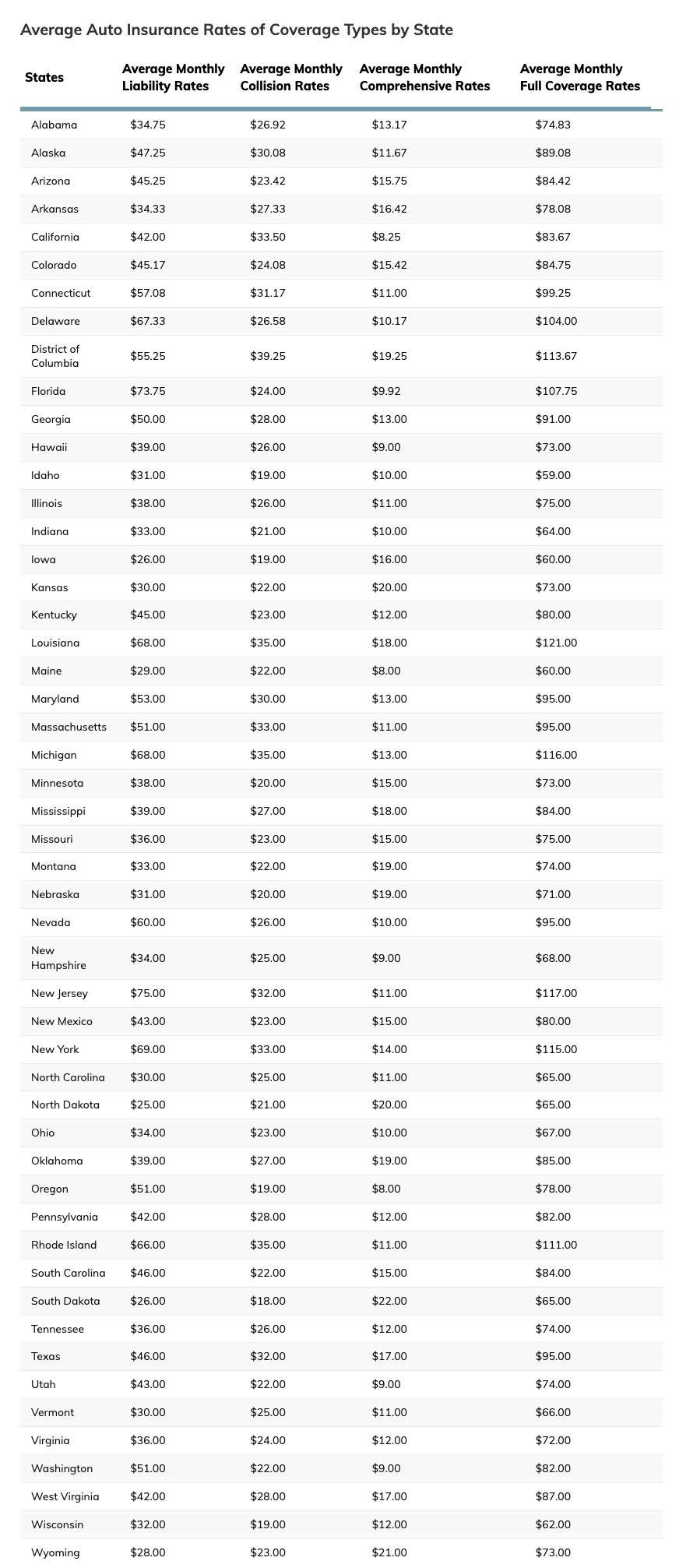
If you’re a licensed driver but don’t have a car of your own, and you occasionally borrow someone’s car, you’re classified as an occasional driver. People who usually rely on the car of their family members or roommates are considered occasional or secondary drivers.
Auto insurance companies usually require that occasional drivers reside in the same household as the primary driver. An occasional driver’s insurance can be much cheaper than standard car insurance if the secondary driver uses the car less than 25% of the time.
How much is occasional driver insurance?
An occasional driver’s insurance is usually more affordable than a standard auto insurance policy since insurance companies offer various discounts on it.
Factors such as age, gender, marital status, zip code, car’s make and model, driver’s history, credit score, and coverage types affect the cost of an occasional driver’s license. Some companies offer as much as 25% discounts on your insurance premiums. Take a look at the table below to understand the standard rates and coverage in various states.
Average Auto Insurance Rates of Coverage Types by State

Since occasional drivers typically drive less frequently, they pose less of a risk to insurance companies. Therefore, they can expect lower-than-average rates on their insurance coverage.
However, it’s important to find out if you qualify as an occasional driver to benefit from the lower insurance rates.
What does it mean to be an occasional driver?
Insurance companies classify an occasional driver as one who must drive the car only 25% of the time or less. Therefore, if a person shares a car with a family member but drives it more than 25% of the time, they will not qualify as an occasional driver. Such a condition makes sense for insurance companies since a person driving less frequently poses less of a risk.
However, not all occasional drivers drive alike. When an occasional driver is a teen or above 65 years of age, they’re considered high-risk because of the potential risks associated with their profile. It’s necessary to compare rates of multiple insurance providers to determine whether an occasional driver’s policy helps you save significantly.
Related Content: How to Get the Cheapest Insurance for Teenage Drivers
Is it easy to add an occasional driver to a policy?
The typical process of adding an occasional driver to your existing policy involves answering a few questions. Once they’re added to your policy, your rates will go up a bit. However, you’d be paying much less compared to coverage for the added person.
While adding an occasional driver is a great way to get discounts on your policy, not every insurance company lets you add one. Be sure to check with your current provider if they acknowledge secondary drivers.
It’s important to inform your provider when someone borrows your car especially when they’re not added to your policy, failing which your insurance company might deny your claim in the event of any damage due to an accident.
The best way to get discounts on adding an occasional driver is to shop around, compare quotes from several providers, and zero down on the one that offers the best coverage at the lowest rates.
Which companies are best for occasional drivers?
Each insurance company would differ in how they approach the occasional driver coverage including some that don’t acknowledge occasional drivers at all. However, many would happily offer discounts for drivers with low mileage. You need to shop around in your area and compare quotes from companies for low-mileage coverages.
Some of the popular companies that are known to offer low-mileage discounts are Nationwide, Mile Auto, Allstate, Root, and Metromile.
If you’re a parent, spouse, or guardian who is planning to add an occasional driver to your existing policy, you need to contact your existing provider or scout for one that does.
How can I save money on auto insurance?
The best way to lower your insurance costs is by saving on coverage through various discounts offered by insurance providers. Following are some of the most common discounts available with car insurance companies:
- Accident-free
- Safe driving
- Defensive driver
- Telematics
- Military
- Alumni
- Safety devices
- Good student
- Homeowner
- Multi-policy
- Paid-in-full
- Paperless
Depending on your policy, you can save anywhere from 5% to 25%. Ask your provider if you or anyone on your policy qualifies for those discounts. Moreover, it’s a good idea to follow an annual ritual of comparing quotes from multiple companies to explore the best prices.
Occasional Driver Car Insurance: The Bottom Line
Getting occasional driver coverage or adding someone to your existing policy is a great way to save on your auto insurance expenses which are usually very high. Since insurance companies have stringent rules on what qualifies as an occasional driver, you need to check with your current provider or shop around to find the one that matches your requirements.
Either way, it’s wise to let your insurance provider know when someone drives your car without carrying occasional driver coverage. This can save you much legal trouble in the future. Finally, explore the several discounts available with insurance providers to lower your rates.
Adding Occasional Drivers: Frequently Asked Questions
Can you add someone to your insurance as an occasional driver?
Yes, you can. You should inform your insurance agent or company about anyone whom you’re planning to add to your insurance as an occasional driver. They will tell you the process of adding and evaluating the person based on their profile.
Insurance companies usually follow certain guidelines and rating systems to list someone as an occasional driver.
Some insurance carriers rate secondary drivers, and in most cases, they may get lower rates than the primary driver.
You should inform the insurance provider about the driving needs and frequency of the person to be added.
How many hours can an occasional driver drive each week?
The definition of an occasional, casual, intermittent driver may vary from one insurance or State to another. Therefore, you should check with your insurance carrier or an agent in your area about the general guidelines related to adding an occasional driver.
Insurance companies such as State Farm, for example, consider a person an occasional driver when they are unmarried and younger than 21 and they drive a car less than 25% of the time or put on less than 25% of the mileage on the car.
As a rule of thumb, some insurance companies suggest that an occasional driver cannot drive the vehicle more than once a week.
Can my teenager be listed as an occasional driver?
Insurance companies differ in how they regard someone as an occasional driver. While some carriers mandate that occasional drivers cannot drive more than 25% of the time or put on more than 25% of the annual mileage, other insurers say an intermittent driver cannot operate a car more than once a week.
Moreover, state laws and underwriting guidelines can also determine the qualification of an occasional driver.
If the occasional driver in question is a teenager and one of the family members, insurance providers would also consider the number of cars in a household and the number of members that drive them.
If a teenage family member has regular and frequent access to cars, they could be considered a primary driver. However, if you have more drivers than cars in your dwelling, the teenager can be labeled an occasional driver.
Sometimes buying your teenager a new car could cost you less in insurance premiums than adding them to your existing policy since teenagers are generally considered risky and hence, are attributed to higher rates and premiums.







